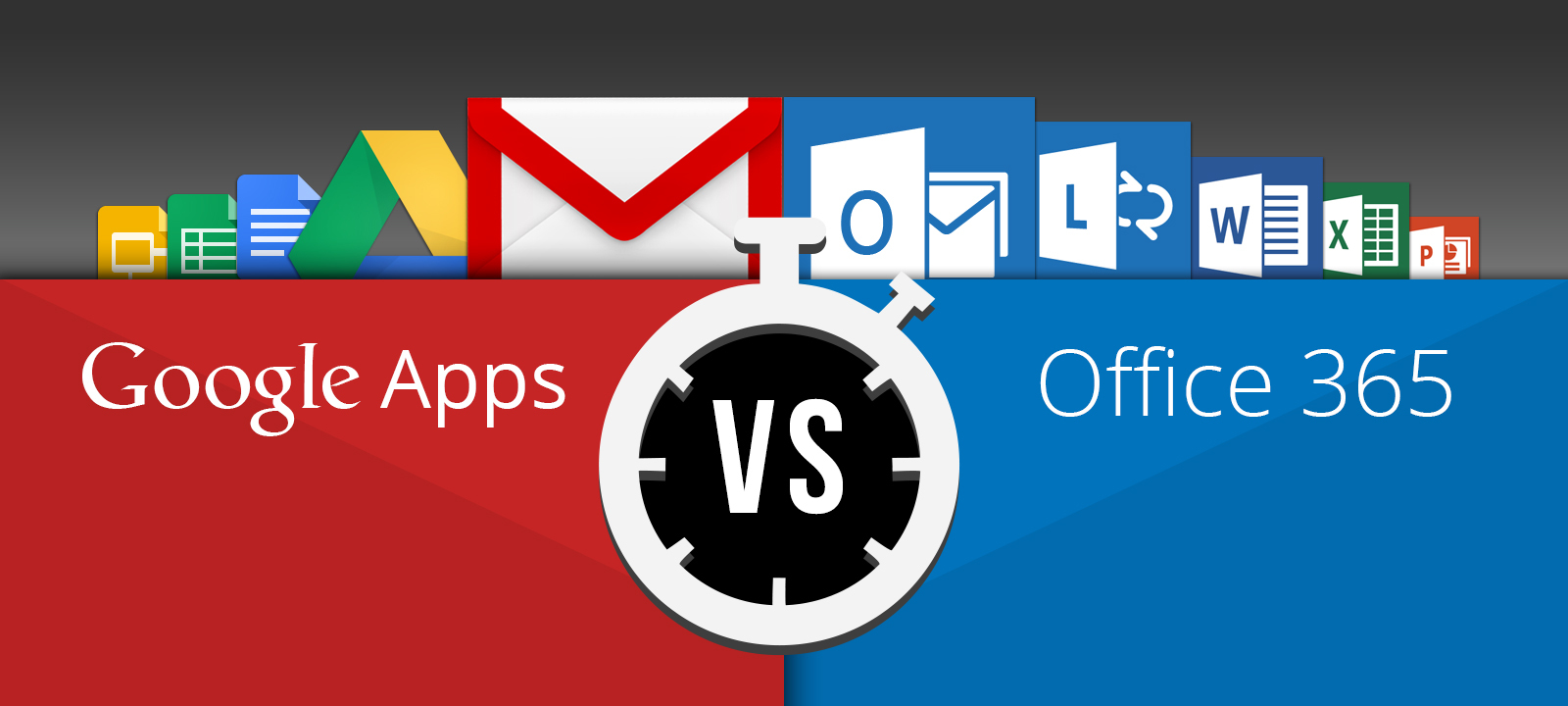Google vs. Microsoft: whose clouds are cooler?
Google Apps and Microsoft Office 365 are business-oriented cloud platforms. But here the similarities end, especially in the area of demographic characteristics of users. According to BetterCloud analytics, which surveyed 1,500 IT professionals in 53 countries, the audience of Google Apps is younger, and the companies in which they work are younger and smaller. Office 365 users, on the other hand, are more likely to be formerly established companies with more mature IT infrastructures.

An analysis of the research results shows that, despite the differences, both groups are moving at high speed to make decisions on the full adaptation of cloud services.
The data published in the new BetterCloud study allows you to examine in detail the differences between the audiences of cloud platforms:
As we can see, Google’s approach to cloud services is revolutionary, while Microsoft’s approach is evolutionary, which is related to targeting different target audiences that differ in IT maturity. For a long time, Google was the only cloud platform for the office, but the advent of Microsoft Office 365 was a turning point for the universal transition to the clouds. Microsoft gave a loud and clear signal about the reality of the full adaptation of the new technology, which is confirmed by research data.
Organizations that have relied on older Microsoft and Lotus Notes products for decades have begun a slow transition to Office 365 globally, joining the early cloud followers that have long switched to Google Apps. Of course, Office 365 audiences will be slower in moving their infrastructure to the clouds on a full-blown basis. However, this does not mean that they will resist change, although they will face many obstacles along the way. It's also important to keep in mind that Office 365 is about 5 years younger than Google Apps.
As Russian reality and practical experience shows, the trends in the development of technological innovations in Russia are fully consistent with global ones, although all changes occur with a certain lag. The main feature of domestic IT should be a greater number of independently developed solutions that meet the requirements of the law and minimize technological dependence. The trends of penetration of cloud services in business activities are already undeniable. Companies can decide for a long time which approach to development will be optimal. But in the end, most organizations recognize the benefits of fully or nearly fully deploying cloud technologies.

An analysis of the research results shows that, despite the differences, both groups are moving at high speed to make decisions on the full adaptation of cloud services.
The data published in the new BetterCloud study allows you to examine in detail the differences between the audiences of cloud platforms:
- Google Apps costs 41% on average, while Office 365 saves 27%
- Organizations using Office 365 are about 4 times older, and users are 5 years older than the Google Apps audience.
- Office 365 audience IT team 5 times larger
- 68% of Google Apps user organizations use only this platform, while 62% of Office 365 audience use hybrid deployment.
- Today, not one of the large organizations (more than 5,000 employees) using Google Apps or Office 365 has completely transferred their IT to the clouds. By 2026, the number of such organizations is expected to increase to 74% and 57%, respectively.
- 84% of large businesses using Google Apps report increased collaboration and collaboration. For Office 365, this figure is 72%.
As we can see, Google’s approach to cloud services is revolutionary, while Microsoft’s approach is evolutionary, which is related to targeting different target audiences that differ in IT maturity. For a long time, Google was the only cloud platform for the office, but the advent of Microsoft Office 365 was a turning point for the universal transition to the clouds. Microsoft gave a loud and clear signal about the reality of the full adaptation of the new technology, which is confirmed by research data.
Organizations that have relied on older Microsoft and Lotus Notes products for decades have begun a slow transition to Office 365 globally, joining the early cloud followers that have long switched to Google Apps. Of course, Office 365 audiences will be slower in moving their infrastructure to the clouds on a full-blown basis. However, this does not mean that they will resist change, although they will face many obstacles along the way. It's also important to keep in mind that Office 365 is about 5 years younger than Google Apps.
As Russian reality and practical experience shows, the trends in the development of technological innovations in Russia are fully consistent with global ones, although all changes occur with a certain lag. The main feature of domestic IT should be a greater number of independently developed solutions that meet the requirements of the law and minimize technological dependence. The trends of penetration of cloud services in business activities are already undeniable. Companies can decide for a long time which approach to development will be optimal. But in the end, most organizations recognize the benefits of fully or nearly fully deploying cloud technologies.
